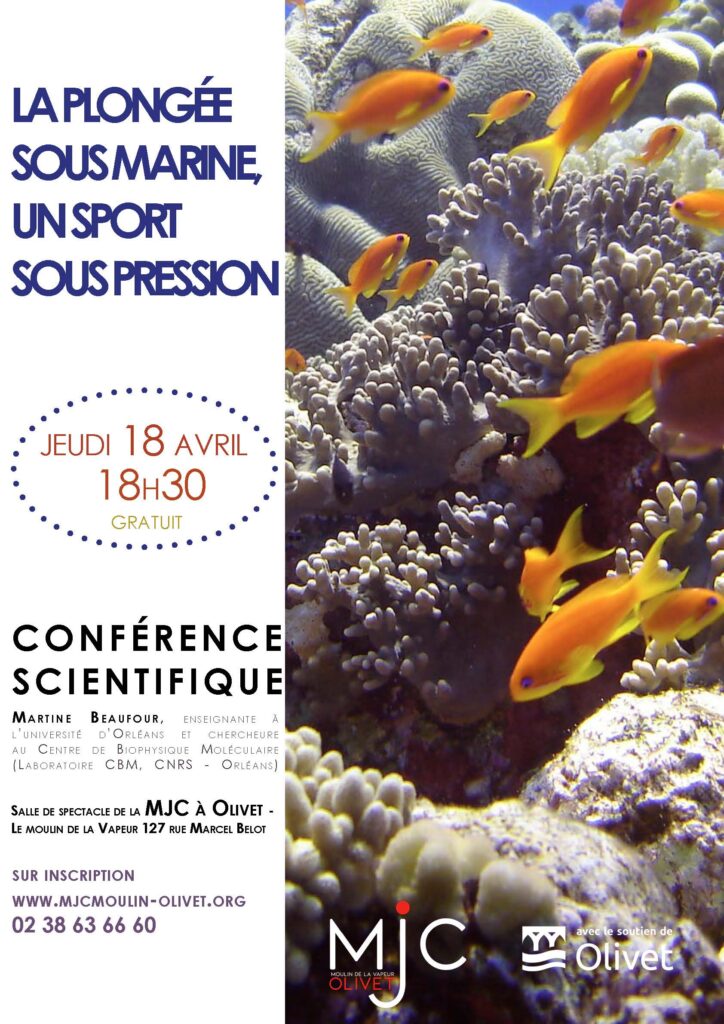A la MJC d'Olivet - Le Moulin de la Vapeur - 127 rue Marcel Belot
Jeudi 18 avril à 18h30 - Entrée gratuite mais sur réservation Par ici !
Avec Martine Beaufour, enseignante à l'université d'Orléans et chercheure au Centre de Biophysique Moléculaire, équipe "Spectrométrie de masse fonctionnelle des assemblages moléculaires"
Nos espaces aquatiques sont nombreux et parfois vastes : lacs, mers, océans... Quoi de mieux que la plongée sous-marine pour les explorer ? Faune, épaves, sites archéologiques, il y a tant de choses à voir !
Lors d’une plongée, tout plongeur s’expose à des variations de pression. Nous verrons pendant cette présentation comment la pression varie avec la profondeur en milieu aquatique, et en conséquence, comment la pression impacte la gestion d’une plongée sur de nombreux aspects.
